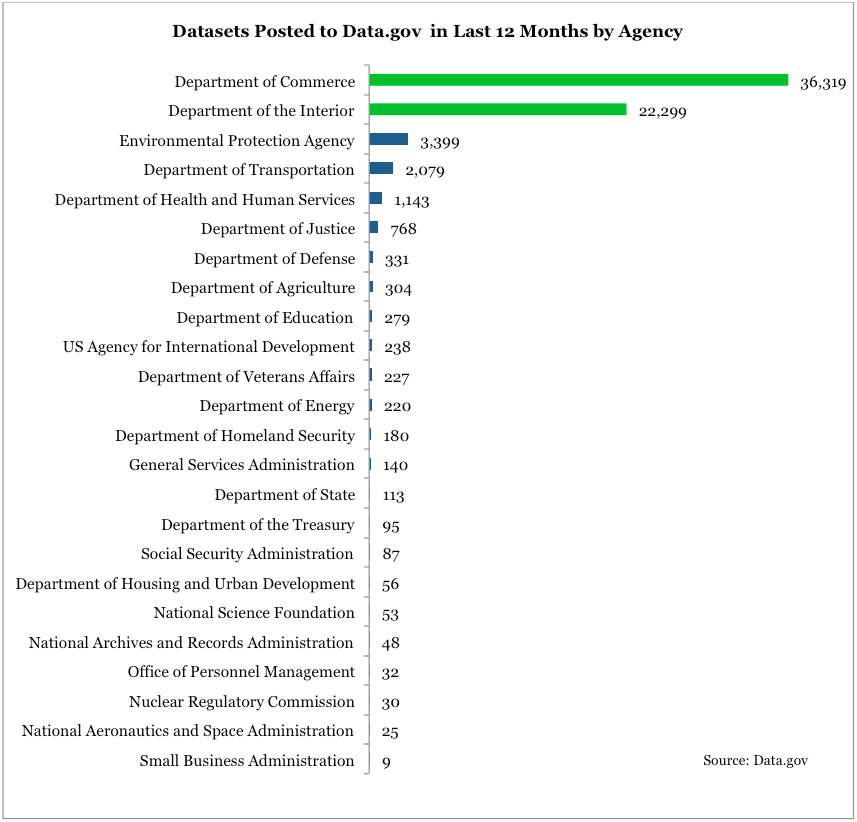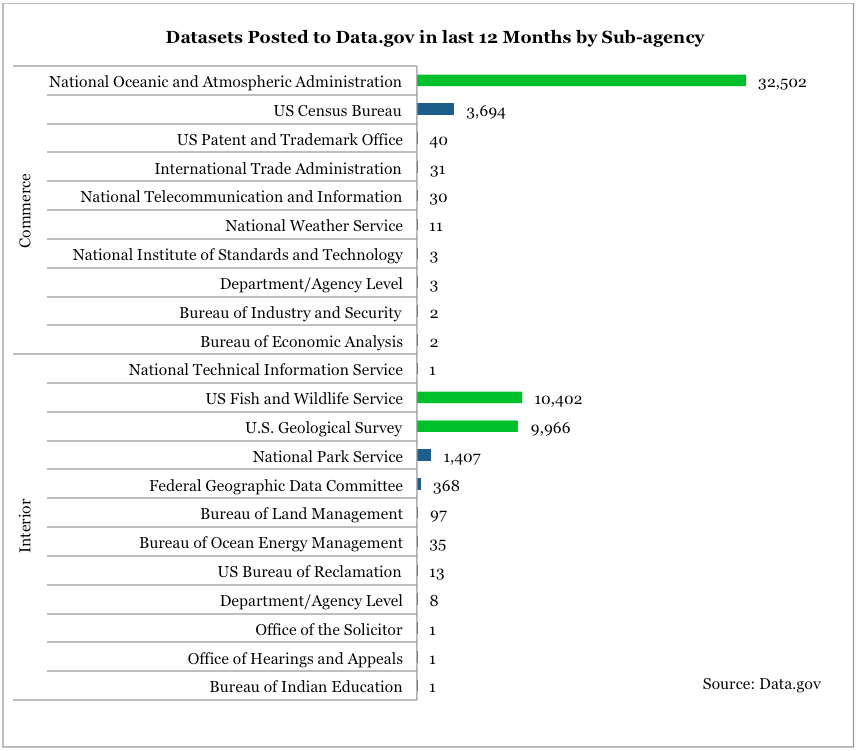Two Agencies Responsible for 85 Percent of Open Data Site
Federal agencies have posted nearly 70,000 datasets to the government's open data website in the last year, but some agencies are proving to be much more open than others.
In December 2009, the Obama administration announced the Open Government Directive requiring federal agencies to expand public access to their data and to begin posting information on Data.gov, the government’s open data hub. One year ago, the administration provided further guidance through its Open Data Policy , which mandates that agencies list datasets in a machine-readable and user-friendly format so that they can be automatically aggregated by Data.gov and other services. Since then, 68,932 datasets have been posted to the site. Data.gov has tallied the number posted by each federal agency over the last 12 months, and the results show that 85% come from just two agencies: Department of Commerce and Department of the Interior.

Adding in the next three agencies – Environmental Protection Agency, Department of Transportation, and Department of Health and Human Services – yields 95% of all datasets posted by agencies on Data.gov over the last 12 months.
Data.gov also provides a list of datasets posted by sub-agency, revealing which organizations within the most prolific agencies are actually responsible for their open data.

There are just three sub-agencies responsible for 77% of all datasets posted in the last year: National Oceanic and Atmospheric Administration (47%), U.S. Fish and Wildlife Service (15%), and U.S. Geological Survey (15%). With all its weather data, it might not come as a surprise that NOAA is the top source for federal open data. However, it is remarkable that it single-handedly accounts for nearly half of all datasets posted on Data.gov over the last year; and NOAA recently indicated that it intends to partner with industry to help share more of its terabytes of weather information.
There are, without doubt, more significant constraints on public information sharing for agencies that work extensively on national security or with personal and/or private health information, but the open data imbalance is still striking. This poses a new research question: what is holding federal agencies back from making greater progress opening their data up to the public?
If you are a federal technology expert and have thoughts on this question or other major federal IT issues, join our Federal Tech Insiders Panel . Your insights will be invaluable to us as we explore how agencies make their data open to the public and illuminate the evolution of federal IT.
This post is written by Government Business Council; it is not written by and does not necessarily reflect the views of Government Executive Media Group's editorial staff. For more information, see our advertising guidelines.



